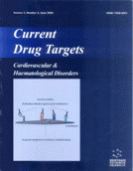Abstract
Peripheral arterial disease is a major manifestation of systemic atherothrombosis that affects a large segment of the adult population. The major treatment goals for this population are to address the marked increase risk in cardiovascular events and then secondarily to treat the disability and reduced exercise tolerance. The primary goals for treating the limb symptoms of PAD are to improve functional capacity, exercise performance and qualify of life. Exercise training in a formal setting, revascularization with angioplasty and cilostazol all have proven efficacy. In addition, there is a major interest in developing new pharmacologic therapies for claudication. Prostaglandins have been utilized for critical leg ischemia for decades, but recent trials have not demonstrated any role for these drugs in treating claudication. Carnitine and its derivatives (propionyl-L-carnitine) have been shown to improve treadmill exercise performance and quality of life. These drugs also have an excellent safety profile. A final promising class of drugs is statins that not only reduce the increased risk of ischemic events but also appear to improve claudication symptoms.
Keywords: disability, peripheral arterial disease, atherothrombosis, limb symptoms
 1
1













